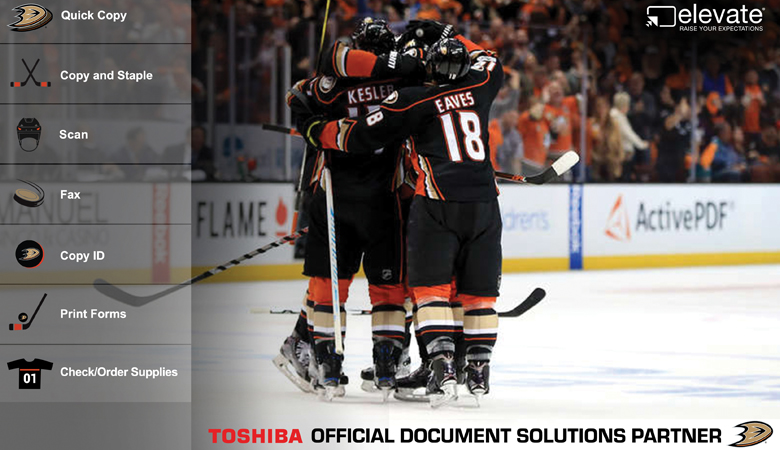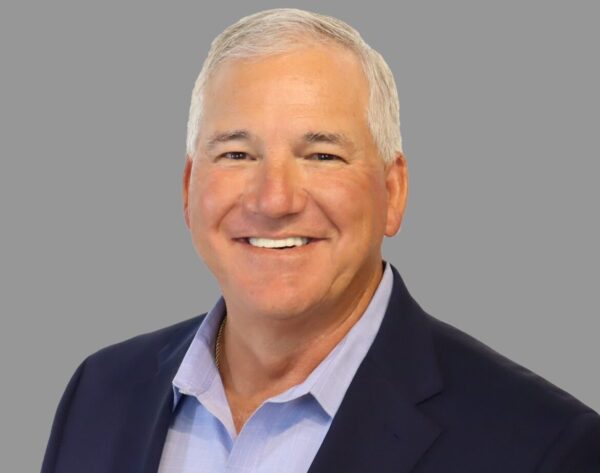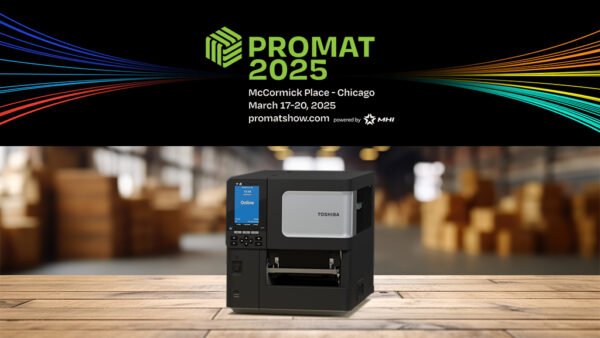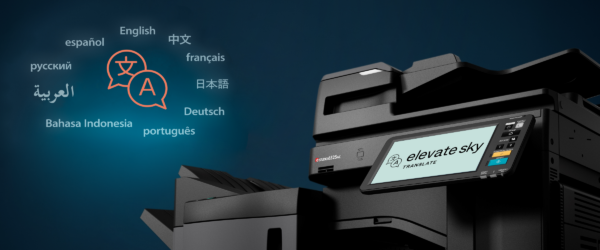Toshiba’s Elevate platform gets more personal.
An example of the Elevate display on an MFP.
The MFP that sits 10 feet from my desk, despite assorted professional ministrations and upgrades, has never really worked quite right. Sure, it prints and copies and scans, but no matter what it is asked to do, I’m always surprised that it doesn’t send any of our computers a message saying, “What! You talkin’ to me?”
Scratch anyone who has survived the last couple decades of MFPs and you’ll be treated to a litany of complaints and compliments. People generally like the versatility of these devices while simultaneously being less than thrilled with having to work around some of the vagaries of their local MFP.
No One-Size-Fits-All
In 2017, Toshiba brought Elevate to this unsettled market. A cloud-based software offering for the company’s e-STUDIO MFPs, Elevate addressed some of the shortcomings of countless MFPs like mine that seem confused about their role in an office or simply tried to be too many things to too many people. A major difficulty is that no two offices—even ones that do essentially the same things—do them in the same way or share the same priorities. That is why there is no one-size-fits-all MFP workflow. So, Toshiba kept at it, and again raised the bar in late 2018 with Elevate 2.0.
The latest version features Elevate Composer, a design portal and app store throughout which authorized Toshiba resellers can customize the software to address customer needs. Elevate Composer includes a drag-and-drop style UI (user interface) that addresses more than 40 workflow applications. Together, these enable resellers to add functions and build a UI tailored to a customer’s requirements.
This customization is where Toshiba says Elevate Composer diverges from the pack of competing products. It is intended to accommodate the differences among individual users in an organization, minimize time spent using MFPs, and shorten the time required for users to become familiar with the new device. These are good things in today’s offices where everyone seems to be spread a little thin and wearing a lot of hats. What Elevate Composer brings to the party is that multiple users can tailor a shared MFP to their individual needs and work processes. This, says Toshiba, saves businesses time and money. The trickle-down effect is that repetitive tasks such as scanning and submitting expense reports, for example, can be standardized so every user can do them the same way… and faster.
What Customers Want
Driving this is Toshiba’s research into what customers actually want, further refined by vertical markets. Several sample user interfaces are designed for vertical markets, including healthcare, houses of worship, manufacturing and logistics, education, retail, finance, government, and legal. For instance, the way a small non-profit organization handles scanning and submission of travel receipts may be different than the way a law firm does the same thing. Using Elevate Composer, employees in either organization can select the appropriate template and submission forms that match an employer’s requirements. This reduces the time required and the chance of mistakes being made while providing businesses the opportunity to standardize on a preferred template.
This level of forward thinking benefits users and equipment resellers.
“Most equipment vendors have some type of customizable control panels, but Elevate Composer goes a step further,” says Jamie Bsales, director of solutions analysis at Keypoint Intelligence. “Toshiba’s templates can be used right out of the box instead of building from scratch. That these templates are keyed to certain verticals and horizontal businesses is a nice plus.”
Such capability has not gone unnoticed. Earlier this year, Elevate Composer was awarded a BLI 2019 Pick award as “Outstanding MFP Customization Tool” from the analysts at Buyers Lab, the parent company of Keypoint Intelligence.
Scanning Automation
Taking such personalization a step further, Elevate Composer offers prebuilt one-touch buttons for several common business processes. This streamlines use of commonly used features and can incorporate branding on documents. The shortcuts and apps behind this are part of the UI that lets end users complete sophisticated multistep tasks with the touch of a button, automating frequently used functions and improving overall organizational efficiency.
For example, one of the most frequent workflows in today’s offices is scanning documents. The problem, though, is that scanning can involve deep dives into complicated menus. Elevate lets customers reduce the process to just one or two steps, pressing an “Email a secured PDF” icon on the touchscreen, and selecting or typing-in an email address. More complex workflows, such as scanning a document, running it through OCR software, converting it to a PDF, and routing it to a cloud-based storage account can be also be performed in a similar fashion. Automation lets users set up their own workflow icon(s) so they can execute tasks faster while working from a personalized touchscreen organized so that only the user’s commonly executed tasks are displayed.
Elevate includes an “Application Deployment Tool” for easy propagation of multiple touchscreens. Once a design is set up, it can be easily transferred to a fleet of MFPs. Still, because not all customers are willing to take the time to set up their own workflows, this duty falls to dealers. The good news is that even non-technical personnel can customize templates for customers. This adds immediate and visible value, even during the sales process, because it expands a dealer’s brand promise and helps deepen the relationship with a customer. For instance, a dealer observed an education prospect’s typical workflows and set up icons and short-cuts that saved time and reduced stress on teachers. And that was how he won the deal.
Why Elevate?
There are also the details, the things that add up to user frustration and can even blossom into reluctance to using a system or workflow. For example, a common annoyance involved with MFPs is a user changing a setting—such as simplex to duplex, or letter to legal paper size—and neglecting to change it back to the original setting. This nuisance vanishes with Elevate Composer because the MFP operates exactly as each user desires—as if it were a personal printer by their desk instead of a shared device 75 feet down a hallway. To many users, this is akin to a preferred parking space by the front door.
Branding Opportunities
“Customers can also use the Elevate platform to display their organization’s logos and other branding elements,” noted Kerstin Woods, vice president of product and solution marketing at Toshiba America Business Solutions (TABS). “Even more, an otherwise plain document can be customized with announcements and reminders such as a charity initiative. In a time when every potential customer touchpoint is a communication opportunity, it is important to leverage the MFP as a communications tool.”
According to Woods, more customization of the touchscreen for individual users and departments is on the near horizon. While Elevate can already be customized by department, an upcoming capability will enable a user to walk up to the e-STUDIO MFP, swipe their user-authentication card, and have a different Elevate configuration appear based on who they are or the department where they work.
The next release of Elevate is scheduled for May 2020.
Access Related Content
Visit the www.thecannatareport.com. To become a subscriber, visit www.thecannatareport.com/register or contact cjcannata@cannatareport.com directly. Bulk subscription rates are also available.





